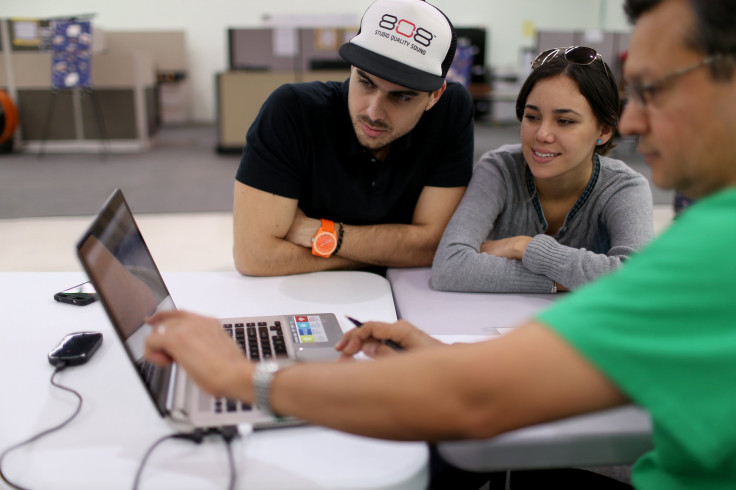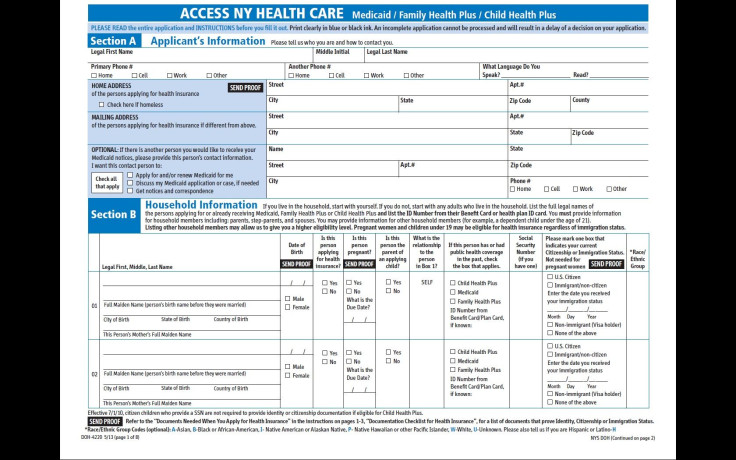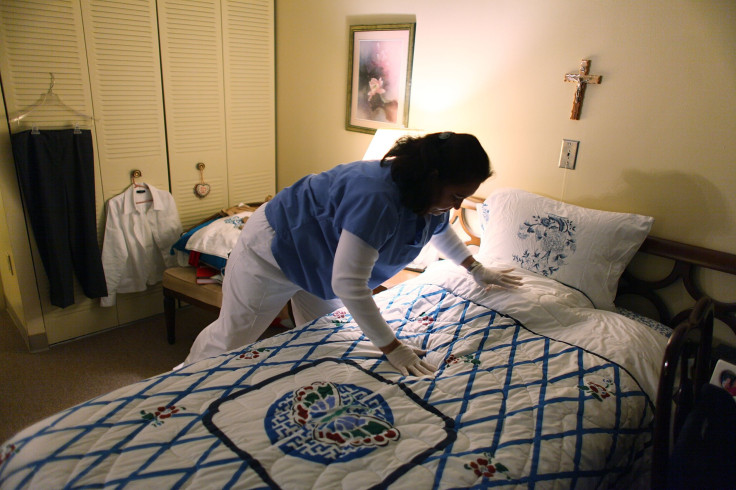Who Uses Medicaid? Students Form Burgeoning Pool Of Beneficiaries: Changing Profile Of Public Health Insurance Program

When Stephen Supoyo learned he and his classmates would have to each pay more than $7,000 a year for basic health insurance through their school, the 27-year-old student at the Icahn School of Medicine at Mount Sinai in New York knew he qualified for a much cheaper, if seemingly unorthodox, option: Medicaid. He dropped his school insurance and enrolled in the public program.
Hardly an outlier, Supoyo and others who have recently enrolled in Medicaid under U.S. President Barack Obama’s federal health-care overhaul are reshaping the profile of those who rely on this public program and belying the numerous unflattering stereotypes that are still frequently attached to its beneficiaries. Their ranks include students and employed members of the working class sometimes holding down multiple jobs, a growing body of evidence indicates. Experts attribute this trend to several developments, chief among them being the expanded eligibility in 29 states so far under the Affordable Care Act (ACA) of 2010, aka Obamacare.
The shifting makeup of those who use Medicaid also underscores the deepening divide between millions living in states where Republican-led governors and legislatures have decided against expanding Medicaid, and those who have reaped the benefits of finally gaining health insurance through expanded Medicaid eligibility.
“It’s definitely a weird feeling,” Supoyo said of being on Medicaid. “The impression I get a lot [from] people is that Medicaid is for the low-income, indigent and special groups. The fact that it includes us -- students -- is a totally novel concept,” he added.

Qualifying and signing up for Medicaid might have felt unusual to Supoyo and his classmates, but they are part of a trend of people gravitating toward Medicaid who do not fit the expected profile of the public insurance beneficiary.
Medicaid is “increasingly the insurer of choice for middle-class workers and their families,” Michael Sparer, a professor of health policy and management at the Mailman School of Public Health at New York’s Columbia University, wrote in an article chronicling these shifts in the July issue of the journal Health Affairs. “It’s much more than a welfare-based program today,” he elaborated in an interview this week.
A Widening Gap
Enacted in 1965, Medicaid has been transformed in subsequent decades from health insurance for welfare recipients to a program that, by 2010, covered low-income children, pregnant women, single mothers, the disabled and, sometimes, the elderly. It’s a massive program. In 2013, total Medicaid spending in the U.S. amounted to $438 billion, according to an analysis by the Kaiser Family Foundation.
Eligibility from state to state has always varied tremendously under the joint federal-state program, and although the most recent sweeping change to the law initially sought to level out some of those disparities, it ultimately failed. In 2010, Obama signed the ACA, which essentially required states to expand Medicaid to cover all adults with incomes up to 138 percent of the poverty line. In 2015, that meant annual income of $16,243 for an individual, or $33,465 for a family of four. But a 2012 U.S. Supreme Court ruling rendered that expansion optional, saying the federal government could not require state governments to broaden their Medicaid programs.
To date, 29 states have expanded their programs, and as of March, more than 71 million Americans were enrolled in Medicaid and its sister program, the Children’s Health Insurance Program, often called CHIP. In the states that didn’t expand Medicaid, about 4 million people fall into a gap where health insurance is unaffordable, an analysis by the Kaiser Family Foundation has found. Viewed in another light, enrollment in Medicaid and CHIP over the same period of time rose by 28.1 percent in states that expanded Medicaid, compared with 8.6 percent in states that did not, according to the Centers for Medicare and Medicaid.
The differences between those two groups of states are stark, as evidenced by a Commonwealth Fund survey that compared the four largest states in the U.S.: Florida, Texas, New York and California. The former two, whose leadership is dominated by Republicans, chose not to expand Medicaid, and the latter two, governed by Democrats, decided to do it.
Roughly 21 percent of Florida’s population did not have health insurance, while 30 percent of those in Texas did not, the survey found. Meanwhile, the uninsured rates in New York and California were 12 and 17 percent, respectively. The survey also found that residents in New York and California had problems getting medical care less frequently than those in Florida and Texas, and they also had less debt and fewer problems with medical bills.
In Florida, almost 700,000 people would be newly eligible under Medicaid expansion. In Texas, nearly 1 million would be.
“There’s still a huge gap,” said Dee Mahan, Medicaid program director at Families USA, a health-care advocacy nonprofit organization based in Washington. In states where Medicaid expanded, adults under 65, even those without children, had far better coverage than those in states without expanded Medicaid programs, she pointed out.
Reshaping The Mold
Expansions under the ACA were nevertheless the most recent change to make many more people eligible for Medicaid, health policy experts agree. This growth helps explain the changing nature of those who are eligible -- and who are signing up -- for Medicaid.
The Centers for Medicare and Medicaid Services, which gathers and stores troves of data, does not keep track of Medicaid beneficiaries by occupation, an agency representative confirmed.
Anecdotally, many of those who are now eligible for Medicaid work seasonally, manage multiple part-time jobs or are caregivers, Mahan said. They are freelancers, hairdressers, taxi drivers, home health aides, construction workers, waitresses and people employed in retail outlets who simply can’t get coverage through their jobs or cannot afford subsidized insurance offered under the ACA, much less benefits offered by employers -- which is not the picture of laziness and negligence that some suggest.
“More and more, you’re seeing people who are working who make less than 138 percent or even less than the poverty line,” Mahan said. She pointed to her recent research showing that in states that have not expanded Medicaid, 57 percent of those who would benefit from such an expansion have jobs.
The perception that people who work won’t qualify for Medicaid is entrenched in society, she said, “But that’s not true. They’re just making a lot less than people realize.”

George Allen, 53, has been working as a home health-care aide for two decades, earning $9 an hour -- a reduction from $10 before the economic crisis of 2008, and a rate he said should be raised to $15 per hour -- cooking for, bathing and washing the clothes of physically or mentally disabled clients. A Las Vegas resident, he has also juggled simultaneous jobs in casino security, with sporadic health-care coverage that has proved particularly devastating for Allen, who is going blind from diabetes.
“If I’d had insurance earlier, I wouldn’t be losing my eyesight today,” Allen said. The company he currently works for, Always There 4 You, does not offer benefits, and for a time he bought private insurance, he said. But it quickly became prohibitively expensive, with medicine sometimes costing him $200 a month, one-quarter of his income. “I had to get family members to try to pay for my medications. It was embarrassing,” he said.
Sometimes, Allen said, when he could not pay for insulin, he concocted a homemade remedy of cinnamon and water to regulate his blood sugar. Eventually, his failing eyesight forced him to reduce his workweek from 40 hours to just two clients.
This year, Allen learned he would almost certainly go blind unless he had surgery. A previous Medicaid application had been rejected, but he reapplied and this time, in July, was accepted. He is awaiting surgery and said he hoped to return to working full-time once he recovers. Until then, for him, “Everyone is a shadow.”
Innovation In Education
Students constitute another burgeoning portion of Medicaid enrollees, whether by signing up for the program itself, the way Supoyo and some of his classmates did, or by benefiting indirectly from experimental programs that rely creatively on that funding.
“We’re definitely seeing more students seeing Medicaid as an option,” said Valerie Lyon, the associate director for business and finance at Cornell University in New York. This has happened as an increasing number of students qualified for Medicaid after New York expanded its program under the ACA. In August 2014, the school launched a pilot program where Medicaid dollars would cover the cost of student health-insurance plans for those who qualified. That year, 210 students were eligible for the plan. For the coming school year, 340 students have signed up so far, and that number could rise, Lyon said.
In part, the experiment was born out of the simple fact that Medicaid had certain limitations. For example, it wasn’t portable, making it difficult for students to obtain medical care when they traveled abroad or out of state. With the pilot program, depending on the parameters of the state, students could potentially keep the health-insurance plans provided by their universities, which can offer more flexible coverage, but it would be paid for by Medicaid. At least two schools in two states are currently doing the same, and schools in 19 states are exploring the pilot with their state officials, Lyon said.
Supoyo, the Mount Sinai student, said he knew at least six people who had signed up for Medicaid, along with at least two who had explored doing so, but later bought coverage elsewhere. He described the insurance not as a long-term solution, but as a more short-term support system.
“Part of the stigma that people associate with Medicaid is the idea that it could be seen as a handout,” Supoyo said. “But I think we [students] all view it more as a temporary helping hand or stepping-stone -- something to bridge the gap between parental support and being truly independent, and the hope is that one day we can pay it back through meaningful contributions to society -- once we’re able to.”
© Copyright IBTimes 2024. All rights reserved.





















